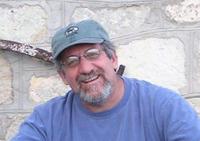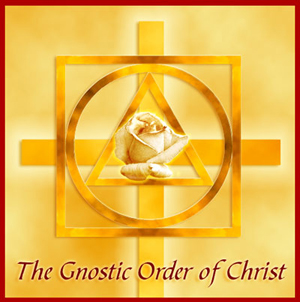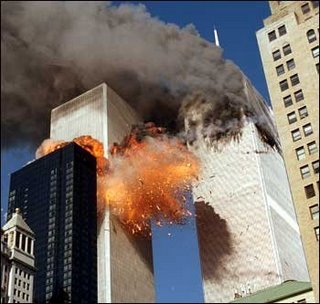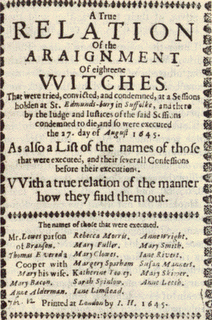 As I've mentioned previously, The Ooze website, an emerging church site, has published my first Burning Man paper as an article in their Culture section. The second paper, the missional apologetic, is scheduled to be published January 18.
As I've mentioned previously, The Ooze website, an emerging church site, has published my first Burning Man paper as an article in their Culture section. The second paper, the missional apologetic, is scheduled to be published January 18.Below I have copied some of the comments posted at the site to my paper, and my responses. In addition, I have started a new thread on The Ooze discussion board with the title "What is Burning Man 'Saying' to the Emerging Church? You can view the original post and the comments here. Perhaps you'd like to join the discussion.
The photo accompanying this post comes from a large metal statue at Burning Man, one of three human figures facing The Man in a posture of worship and offering prayers of hope with the 2006 festival theme "Hope and Fear: The Future." The photo is byWaldemar Horwat, and copyrighted 2006.
Here are the comments on my Burning Man article:
Awesome! Thanks for providing this rich encyclopedic treatise - makes me want to attend next year.
Posted by Jon Redux Posted at 12/14/2006 8:49 AM
______
Very interesting to read. In the summer I work with a lot of people like this, and indeed some of them this year wanted to attend Burning Man, though I don't know if they ever did. This has helped me to understand them a bit more.
I was also wondering if you have ever checked out the Orthodox Christian Church as a Christian answer for these people at Burning Man. I mean the Orthodox are historical being the oldest Christian group still around, and they retain strong links to their past. Their call to lead the Christian life is way more than just the alter call, and I think their worship would satisfy any need for fantasy. I personally have seen or experienced nothing else like it. Just a thought. Thanks for sharing yours.
Posted by Stephen Posted at 12/15/2006 6:27 AM
______
______
There really isn't much value in this blatantly pagan ritual that contributes to the godward trek of the Christian. Certainly there are some interesting aspects in the phenomenon, but that doesn't excuse crass godlessness.
Posted by Spencer Posted at 12/20/2006 3:52 PM
______
______
I appreciate the comments on this article and hope that it continues to stimulate thinking related to the emerging church and missions in the post-modern and post-Christendom West.
As to Stephen's comments on the possibility of Eastern Orthodoxy being of interest and relevant to Burning Man participants, I think this falls short of being culturally relevant. We need to approach this as a subculture just as a missionary overseas would approach another culture and seek appropriate forms of engagement and the cross-cultural communication and embodiment of the gospel. I attemt to suggest one such approach in my next article on this, a missional apologetic that will be posted on the Ooze in January.
Posted by John W. Morehead Posted at 12/20/2006 7:12 PM
______
______
I just don't see the necessity of being "open-minded" to an "alternative" spiritual community. Isn't Christ the _only_ way to the father, in his own words?
While burning-man may be culturally complex, and there may be more to it than the patent dismissals that are given it, it is essentially pagan and evokes pagan imagery and practice. This article casually sweeps aside the accusations pointed at the festival about being a drug/sex/pagan festival as if they are untrue, but all of these elements are not only present, but a huge part of the "festivities," along with the art and community and whatever else.
Now, I don't believe a situation exists where one cannot learn of Christ, but to say that a festival such as this is a spiritual experience for us to learn from and emulate, well I find that not just hard to follow, but absurd.
______
Shepherd, thank you for reading the article, and for passing along your comments. Please allow me to respond to some of the items you mentioned.
First, while Christ is indeed the way in which God has chosen to reconcile the world with Himself, this does not mean that Christians do not have a responsibility to understand the various subcultures and people groups of the world as we seek to incarnate the gospel in their midst, and this includes the Burning Man subculture. In order to appropriately communicate Christ in deed and word we must be open minded, otherwise we will not understand those we seek to communicate with. This approach has been used in the history of Christian missions, just as Paul understood the various types of Pagan subcultures and used differing means of communicating with them (e.g., contrast Acts 14 with Acts 17).
Second, an examination of Burning Man and the academic literature surrounding it indicates that Burning Man is not properly understood as Pagan in the sense of Neo-Paganism, even while it draws upon the symbolism and religious ideas of various religions and spiritualities, including Neo-Paganism. Before Christians can say they disagree with Burning Man they must truly understand what they disagree with, and what they may find of value as well.
Third, my article does not casually sweep aside allegations of drugs, sex, and Paganism at Burning Man, but points out that the festival is far more than this, and that Christians and other critics have ben too quick to stereotype and dismiss this subculture in such a fashion. Our understanding and critique must have more complexity and depth. This is only fair to Burning Man adherents, and the only intellectually responsible thing to do. Perhaps we could paraphrase Jesus: "Judge others fesitvals as you would have them judge your Christian faith."
Finally, as to whether Christians can learn from Burning Man vs. merely having something to say to them, in the history of Chrisitan missions there is a long history of the recognition of the Spirit's moving in cultures and religions long before Christians arrived on the scene, and the church has learned to appreciate aspects of her own faith in light of the encounter with the religious other. As an example in the Burning Man context, Protestants have lost touch with a theology of festivity in connection with our liturgy, our celebration of the religious calendar, and in our expressions of worship and community. We can learn these lessons from Burning Man, if we have "ears to hear."
I appreciate your comments and concern, but this article is hardly absurd. Indeed, superficial dismissals by Christians such as yours appear to be the ones that are problematic. The Ooze community can do better. We have to if we want to speak with relevance in the post-modern West.
Posted by John W. Morehead Posted at 12/25/2006 1:36 PM





















